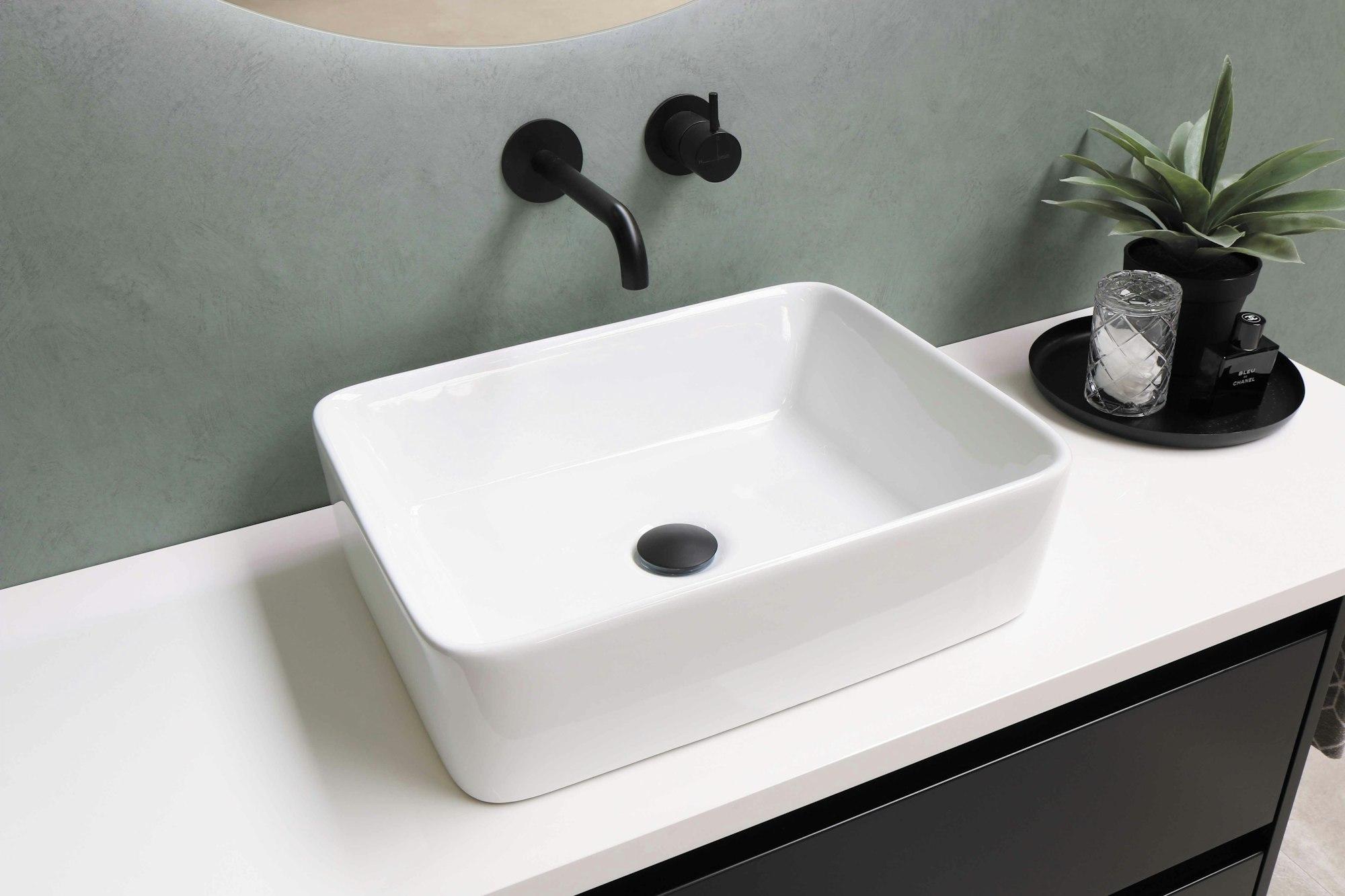Parts of a Sink
Understanding the parts of a sink—from the faucet and basin to the P-trap and shut-off valves—empowers you to handle basic repairs and maintenance with confidence.

Photo by Sanibell BV
While plumbing projects might seem daunting, understanding the basic parts of a sink can simplify repairs and maintenance. From the faucet controls you twist every day to the drain lines hidden beneath, most sinks share a set of core components. Once you know their functions, tackling many simple tasks—from replacing a washer to clearing a clog—becomes much more manageable.
Common Sink Components
Every sink, whether in the bathroom, kitchen, or utility room, includes a handful of standard parts:
- Faucet: Where water flows out. Inside, you’ll find a spout, controls, washers, gaskets, aerators, and more.
- Controls: Levers, knobs, or handles that let you turn water on and off and adjust the temperature.
- Basin: The bowl-shaped area that holds water. Basins vary widely in size, shape, and material.
- Drain: At the bottom of the basin, the drain leads water into your home’s plumbing.
- Tailpiece: The vertical section of pipe connected to the drain fitting, guiding wastewater downward.
- Water Supply Lines: Dedicated hot and cold lines that bring water from your home’s main supply.
- Trap (P-Trap): A U- or P-shaped pipe under the sink that prevents sewer gases from entering your home.
- Cleanout: A fitting near the trap that allows easy access for removing clogs.
- Shut-Off Valves (Stops): Located near the sink, these valves let you cut off water supply to the sink without affecting the rest of the house.
If you’re thinking about more extensive kitchen upgrades or remodeling, exploring related projects can give you a full picture of what’s possible. For example, check out small kitchen design ideas to maximize utility in tight spaces, or learn what is a kitchen island to see if adding one suits your home’s needs.

Kitchen Sink Parts
In the kitchen, sinks often have a few extra components:
- Escutcheon: A plate that covers holes and connections at the faucet base.
- Spray Head & Hose: A detachable, flexible sprayer for easier dishwashing.
- Strainer & Strainer Body: Filters out large debris, preventing clogs.
- Garbage Disposal: Grinds food scraps before they enter the plumbing.
- Stopper: Blocks the drain opening; can be removable or a basket-style insert.
Bathroom Sink Parts
Bathroom sinks are usually simpler but have a few distinct features:
- Stoppers: Integrated drain stoppers controlled by a lift rod and pivot mechanism for holding or releasing water in the basin.
- Valve Stops: Separate shut-off handles for hot and cold water lines, often found beneath the sink.
Sink Faucet Parts
Faucets themselves are mini assemblies:
- Faucet Lever: Controls water flow and temperature.
- Faucet Body: Connects to supply lines and channels water to the spout.
- Spout & Aerator: Direct water into the basin; aerators reduce splash and save water.
- Escutcheon & Compression Couplings: Cover holes and connect pipes neatly.
- Water Supply Lines & Dishwasher Drain Hose: Feed water to the faucet and send wastewater from a dishwasher (if present).
Sink Drain Parts
The drain system is straightforward once you know the basics:
- Strainer Basket: Sits at the bottom of the basin to catch debris.
- Strainer Flange: Supports the strainer and may connect to a garbage disposal.
- P-Trap: Maintains a water seal to block sewer gases.
- Strainer Nut, Rubber Gasket & Friction Gasket: Components that ensure a tight, leak-free seal.
- Plumber’s Putty: Often used around the strainer flange to prevent leaks.
If you’re expanding your home improvement know-how, understanding where your sink fits into the bigger household picture is helpful. For instance, once you master sink repairs, consider learning about advanced topics like locating wall studs without a stud rinder, which can come in handy for mounting heavy items or installing cabinets near your sink.
By familiarizing yourself with these essential components, you’ll be better equipped to tackle common sink issues—from fixing a slow drain to updating a faucet. Over time, you’ll build confidence in your DIY skills and learn how small improvements, like selecting the right stopper or installing a garbage disposal, can enhance the functionality and style of your space.
Quick facts
What is a sink faucet?
A sink faucet is a fixture that controls the flow of water into the sink, typically including handles and a spout.
What are the three types of faucets?
The three main types of faucets are compression, ball, and cartridge, each differing in design and mechanism.
What is the most reliable faucet brand?
Reliable faucet brands include Delta, Moen, and Kohler, known for durability, design, and performance.
Can you replace a sink faucet?
Yes, a sink faucet can be replaced by turning off the water supply, disconnecting the old faucet, and installing a new one.
What is the sink drain thing called?
The sink drain component is called a drain assembly, which includes the flange, tailpiece, and sometimes a stopper.
How do I fix my sink drain?
To fix a sink drain, check for clogs, tighten loose connections, or replace damaged parts like the P-trap or gasket.
What is the drain part of a sink called?
The drain part of a sink is called the P-trap, which prevents sewer gases from entering and facilitates water flow.
How do you unclog a sink drain?
Unclog a sink drain using a plunger, drain snake, or a solution of baking soda and vinegar to clear debris.
What is the sink drain plug called?
The sink drain plug is called a stopper, which seals the drain to hold water in the sink.
How do I fix my sink drain stopper?
Fix a sink drain stopper by checking the lift rod and pivot rod connections, and replacing any damaged parts if necessary.
How do you replace a pop-up sink plug?
Replace a pop-up sink plug by disconnecting the pivot rod, removing the old plug, and inserting the new one, ensuring it fits properly.
What can I use instead of a drain stopper?
Instead of a drain stopper, you can use a rubber plug or a makeshift cover like a flat object to block the drain.

Mihai Crisan
Software Engineer at Spoken
Mihai is a dedicated software engineer at Spoken, where he combines his passion for technology with his professional expertise. As a tech geek, he is always on the lookout for innovative solutions to simplify and enhance people's lives through cutting-edge technology. Mihai’s curiosity drives him to explore and implement new ideas that make a real impact.
Read more